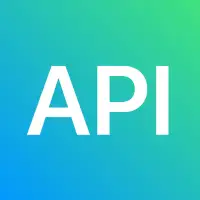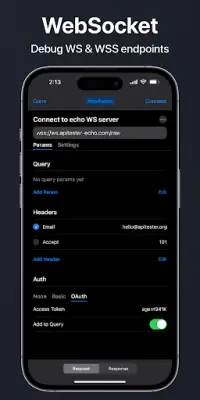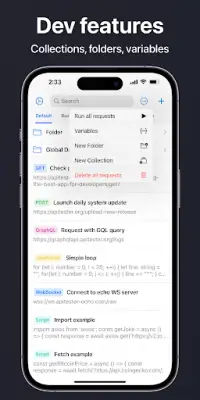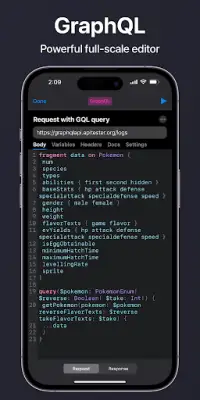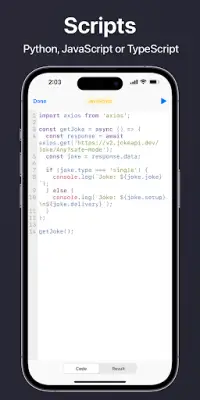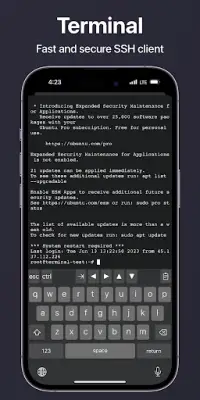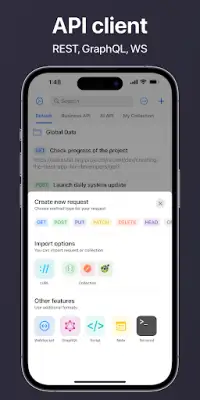Latest Version
7.5
January 24, 2025
FJEDI
Tools
Android
1
Free
apitester.org
Report a Problem
More About API Tester: Scripts & Terminal
This application is designed to provide comprehensive support for a wide variety of HTTP requests, including standard methods such as GET, POST, PUT, and DELETE, as well as more specialized types like HEAD, OPTIONS, and LOCK. Users can interact with APIs efficiently, enabling them to test and manage different kinds of web-based services. The inclusion of methods like PROPFIND and UNLINK allows for advanced interactions typically required in RESTful services, making it a versatile tool for developers working across multiple platforms.
One of the standout features of the application is its powerful GraphQL editor, which offers a robust experience for writing and debugging queries, mutations, and subscriptions. The editor includes support for syntax highlighting and provides a variables editor alongside a documentation explorer to enhance user understanding and interaction. It also allows for configuration of request settings and metadata, ensuring that users can customize their API requests to meet specific needs effectively.
For real-time communication testing, the application includes a WebSocket testing tool that allows users to establish connections and handle message exchanges using both WS and WSS protocols. Moreover, it supports various data encoding formats for API calls, enabling developers to send data as query parameters, raw data, or even upload files directly from various sources including local storage and remote servers. This flexibility is essential for modern web development, which often requires integration from multiple data sources.
Additional functionalities enhance the overall user experience, such as the ability to import requests or collections from formats like Swagger or Postman, and options for quick sharing of requests via deep links or cURL commands. The application also prioritizes usability with features like request history tracking, authorization mechanisms for basic and OAuth authentication, and configurable settings to manage aspects like SSL verification and timeouts. Further enhancements include metrics for measuring request performance, cookie management, and an intuitive interface optimized for different device screens.
Rate the App
User Reviews
Popular Apps










